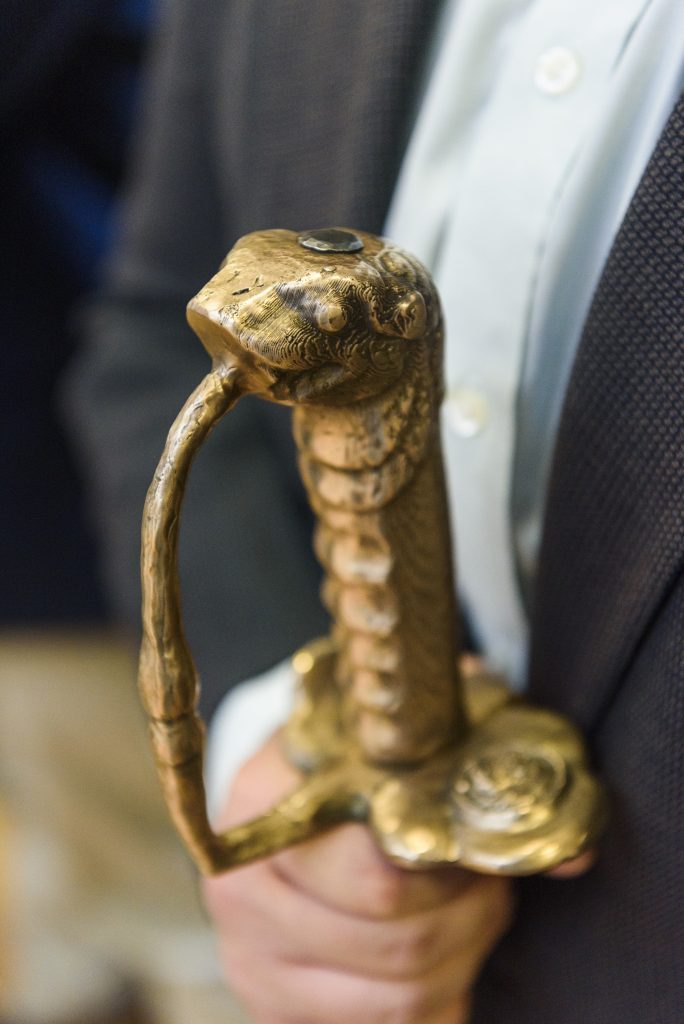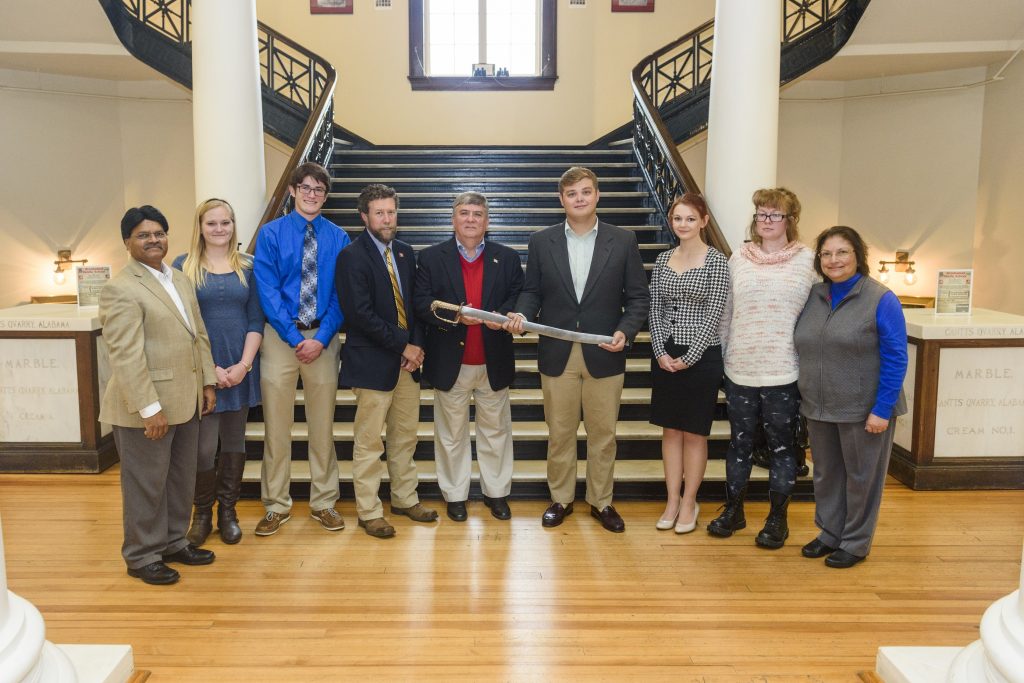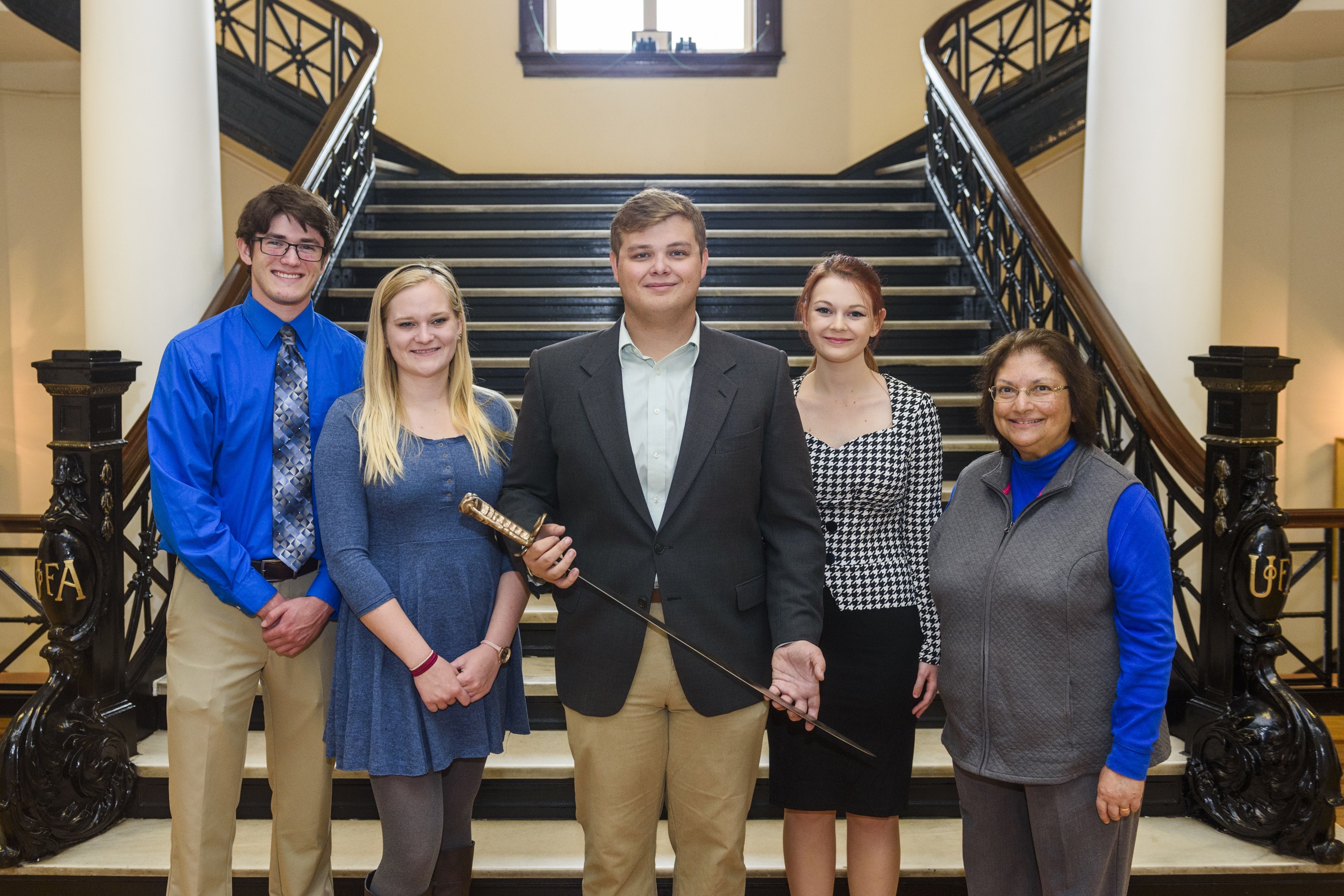
The sword might not have been pulled from a stone, but the time and dedication that went into creating the intricately designed piece would rival anything originating from Camelot.
The recent sword presentation was the culmination of a year-long senior project for four University of Alabama engineering majors.
“It’s happy and sad,” said 22-year-old Hanna Hefley. “It’s been a wonderful project and a huge learning experience. It’s a great way to finish out our time at UA.”
Working with UA’s Office of Archaeological Research and with the permission of Alabama Power Co., the students — Michael Rose, of Kennesaw, Georgia; Danny Massie, of Belleville, Illinois; Hefley, of Memphis, Tennessee; and Maggie Saylor, of Millsboro, Delaware; all metallurgical and materials engineering majors in Dr. Subhadra Gupta’s class — spent the past two semesters researching and developing a plan to create a replica of an 18th century British Hanger rapier. The sword has been part of UA Museums for the last half century and is studied as part of the history of the state and founding of the nation.
The sword was supplied to both the British Navy and infantry and likely traded or gifted to a member of the Creek during the early to mid-1700s, said Matt Gage, executive director at UA’s Office of Archaeological Research.
It was recovered in 1962 on the banks of the Coosa River by two young men, Ross Morrell, who later became the archaeologist for the state of Florida, and Carey Oakley, who later founded OAR.
At the time, Alabama Power asked the University to assist in addressing archaeological sites that would be affected by the construction of H. Neely Henry Dam and the creation of a series of lakes along the Coosa.
The sword was intact with a bronze hilt and a blade so rusty that it disintegrated upon exposure to the air, but not before being photographed and documented.
Using three-dimensional imagery developed through a technique called photogrammetry, the students made a 3D image of the hilt. The next step was creating rubber molds in preparation for the bronze casting. Once the hilt was cast, Massie worked with blacksmith Forrest Millsap in forging the blade.
“The effort these students put in to come up with this detailed replica is amazing,” Gage said. “They couldn’t have done it without the technology we have today.”
More than replicating a piece of history, this project has provided real-world experience that the students can use in their future career endeavors. The students learned about metal working, casting and modeling, and their sword hilt won first place in the American Foundry Society’s student casting competition in Birmingham in April.
“The project was absolutely outstanding,” Gupta said. “The teamwork they had was amazing. They didn’t have a team leader, but they fit together seamlessly. They are definitely my first group of students who have gone over and beyond on their project. I’m a very proud professor … and this is an A-plus project.”
Now that the sword has been handed over to UA’s Office of Archaeological Research and UA Museums, it will initially be displayed at the Alabama Museum of Natural History and then Alabama Power Company. It will then be available for study and presentations.
“This represents a lot of hard, dedicated work, but it’s also something they are proud of,” said Bill Gardner, senior engineer environmental affairs for Alabama Power. “What they learned will be very beneficial to the students and their careers. And their professor seems equally happy. There’s nothing like a happy student and a happy professor.”

Contact
Kim Eaton, UA media relations, 205/348-8325 or kkeaton@ur.ua.edu
